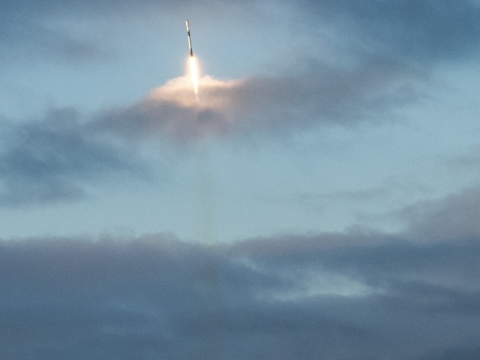Disruptive by Design: Drone in a Box Meets Military Comms
Unmanned systems and robots are rapidly changing the character of warfare. As the U.S. Defense Department considers their increased use, the time is ripe to discuss both the opportunities and challenges these autonomous systems present on and off the battlefield for military communicators.
Unmanned systems and robots are rapidly changing the character of warfare. As the U.S. Defense Department considers their increased use, the time is ripe to discuss both the opportunities and challenges these autonomous systems present on and off the battlefield for military communicators. Communicators deliver and protect command, control, communications, computers, intelligence, surveillance and reconnaissance (C4ISR) services. Unmanned systems rely on digital communication channels to execute tasks and share information. The more systems, the more links required.
The scope of managing these channels is set to explode.
Luckily, advances in unmanned systems themselves offer hope. Developments in autonomy, ease of use and coordinated actions bring new capabilities while lowering the bar for operation.
Commercial drone-in-a-box systems illustrate where these trends are headed. Multicopter drones—kitted-up versions of low-cost toys now sold by the millions—demonstrate tremendous potential. Outfitted with cameras and sensors, the drones can rapidly deploy to dangerous areas and provide better surveillance than ground-based operations.
Furthermore, these same systems no longer need experienced operators. The devices can execute preprogrammed routes, automatically adjust flight patterns based on changing environmental conditions, and execute a number of sophisticated tasks. From building rope bridges to staging dazzling light shows, the drones are nowhere near their ceiling for potential applications.
In addition, they no longer require a team of advanced maintenance technicians for refueling and recharging. A number of companies now offer drone-in-a-box systems that come with a fully or semi-automated support tail. A base station that houses the drone, recharges it and transfers its data can provide all the backside support functions that humans once performed.
Israel-based drone maker Airobotics, for instance, has developed a drone-in-a-box system for monitoring supply control at mining sites. It uses 3-D photography to feed analysis and modeling systems. Latvian aerospace company Atlas Dynamics uses its devices for security. When an alarm is tripped, a system automatically deploys to provide close-up views. The system also can be programmed to conduct regular patrols.
As drone-in-a-box and other unmanned systems become less expensive and easier to employ, they will replace military manpower for dull, dirty and dangerous tasks. From sentry duty to advanced scout and sensor functions, these technologies have a lot to offer both combat and sustainment operations.
Beyond these systems, the Army wants to develop a new family of tactical unmanned aerial vehicles to replace the aging Gray Eagle and Shadow. Service officials are considering next-generation autonomy and would like to see one operator managing multiple devices.
Likewise, China’s recent announcement of remote-controlled tanks, along with Russia’s testing of combat robots, has caught the attention of the U.S. defense industry. Increasingly, the next generation of combat systems will pair or partner unmanned platforms with human operators and teammates.
Perhaps it is also time for military communicators to think about employing these systems to meet their own requirements. Unmanned systems could support a wide range of C4ISR requirements. Current retransmission operations rely on fixed sites or manned vehicles to extend signals. By deploying aerial drones, tactical radio networks could be meshed and extended for both analog and digitized radio frequency (RF) communications.
Additionally, point-to-point laser-based communications could be deployed whenever degraded, disrupted or intercepted RF transmissions are a concern. Unmanned aerial or ground-based systems could close these circuits. Furthermore, robots and drones could rapidly deploy tactical C4ISR infrastructure with little or no supervision. Unmanned systems could perform trenching, power and cable employment and aerial inspections.
Overall, advances in technology increasingly illuminate that computers, machines and unmanned systems will replace routine human tasks. In the military, this means a rush to buy down risk to forces and save manpower for combat operations by employing such systems. Military communicators must consider how this change in combat operations will affect their ability to support and defend C4ISR capabilities. At the same time, they need to think about how these advances can improve their own effectiveness.
Maj. Ryan Kenny, USA, created an online forum to foster discussions on emerging technologies at www.militarycommunicators.org. Contact him on LinkedIn or follow him on Twitter @RyanKenny100101. The views expressed here are his own and do not represent the views and opinions of the U.S. Defense Department, U.S. Army or other organizations with which he has been affiliated.
Disruptive by Design explores innovation and ideas with the potential to expand capabilities and revolutionize products, services and behaviors. For more information, visit url.afcea.org/YoungAFCEAN .




Comments